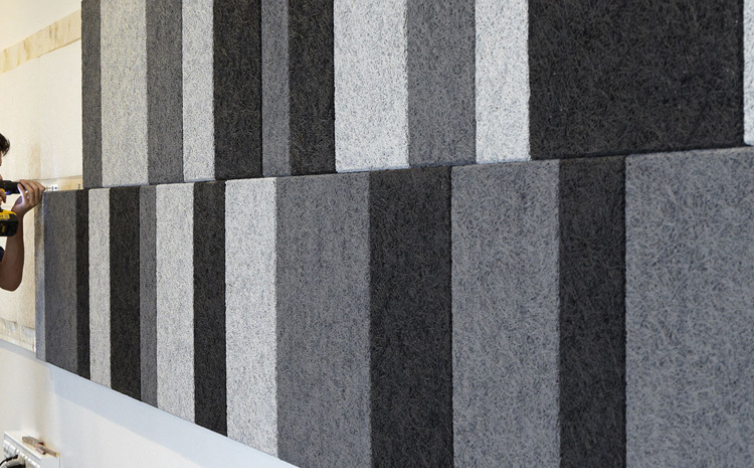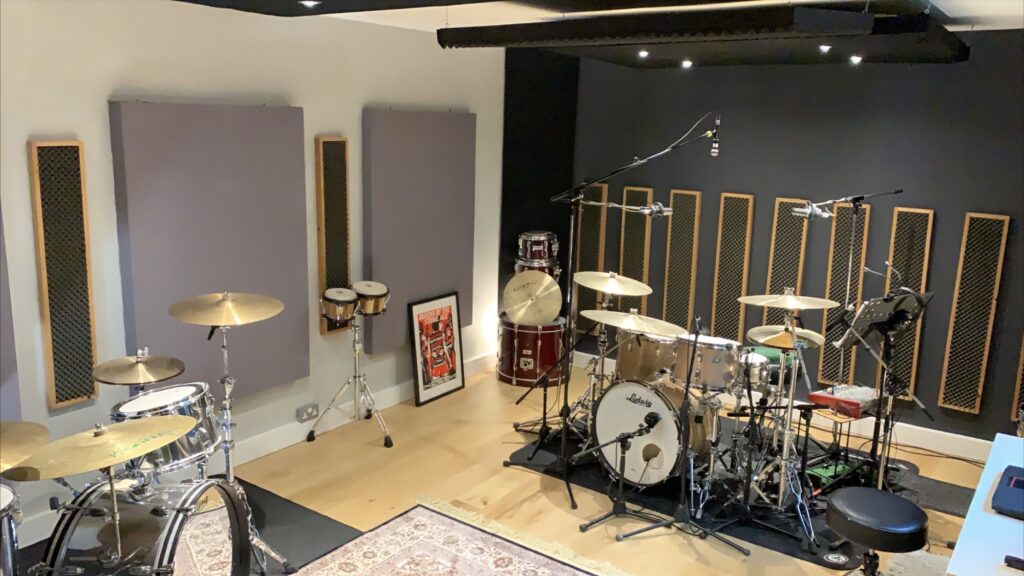Wood wool acoustic panels are a popular solution for controlling noise and enhancing acoustics in various spaces. Whether you’re looking to improve sound quality in an office, restaurant, or studio, these panels offer an eco-friendly and effective option. In this article, we’ll guide you on how to choose the right wood wool acoustic panels for your needs.
1. Understand the Acoustic Requirements of Your Space
Before choosing wood wool acoustic panels, assess the sound requirements of your space. Different environments have varying noise levels, and the purpose of sound treatment may differ:

- Offices: To reduce distractions and enhance focus.
- Restaurants: To minimize echo and improve customer comfort.
- Studios: To control sound reflections for better audio quality.
Identifying whether you need sound absorption, reflection control, or both will help you choose the best type and density of wood wool panels.
2. Consider Aesthetic Preferences
Wood wool acoustic panels not only serve functional purposes but also offer aesthetic appeal. These panels come in various textures, colors, and shapes, allowing you to blend them with the interior design of your space.
- Natural Finish: Ideal for spaces that want a rustic, eco-friendly look.
- Painted Panels: For modern and colorful interiors, these can match the color scheme of your room.
- Custom Designs: Some manufacturers offer customized patterns or engraved designs to enhance visual appeal.
Choose a style that complements the look and feel of your space while meeting your acoustic needs.
3. Evaluate the Panel Size and Thickness
The size and thickness of the wood wool acoustic panels influence both their acoustic performance and installation. Larger, thicker panels generally provide better sound absorption, making them ideal for spaces with high noise levels, such as theaters or gymnasiums.
- Thicker Panels (50mm+): Offer superior sound absorption for larger, noisier environments.
- Thinner Panels (25-35mm): Suitable for small to medium-sized rooms with moderate sound control needs.
Select the panel thickness based on the size of the space and the level of soundproofing required.
4. Check Fire and Moisture Resistance
Wood wool panels are often used in public spaces and need to comply with safety standards. It’s essential to choose panels that are fire-resistant, especially for high-occupancy areas like hotels, schools, or concert halls. Additionally, for spaces like kitchens or swimming pool areas, ensure the panels offer moisture resistance to prevent damage and maintain longevity.
Look for certifications or ratings indicating fire and moisture resistance when selecting your wood wool panels.
5. Consider Installation Requirements
Another critical factor is the ease of installation. Some wood wool acoustic panels are lightweight and easy to install, while others may require professional help due to their size or mounting system.
- DIY-Friendly Panels: Choose lightweight, easy-to-mount options for small projects like home offices.
- Professional Installation: For larger spaces or more complex designs, consult a professional installer to ensure proper alignment and placement.
Also, check whether the panels come with mounting accessories or if you’ll need additional hardware.
6. Sustainability and Eco-Friendliness
Wood wool acoustic panels are eco-friendly by nature, made from renewable materials like wood and cement. However, some manufacturers go further by offering panels with higher sustainability ratings or certifications like LEED.
If sustainability is important for your project, choose wood wool acoustic panels from a supplier that prioritizes environmentally-friendly production methods.
Call us: Contact Waseem Technical Soundproofing Expert in Dubai For Soundproofing: +971 50 209 7517
Conclusion
Selecting the right wood wool acoustic panels involves evaluating the acoustic needs of your space, design preferences, panel size, and installation requirements. By considering factors such as fire resistance and sustainability, you can make an informed decision that enhances both the acoustics and aesthetics of your environment. Whether it’s for an office, restaurant, or studio, wood wool acoustic panels provide a versatile and eco-friendly solution to improve sound quality.




